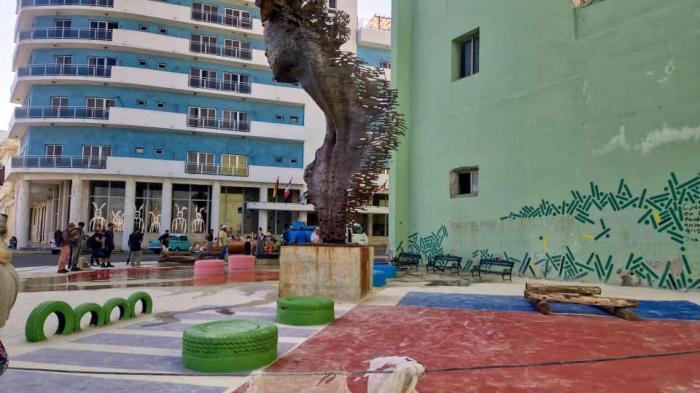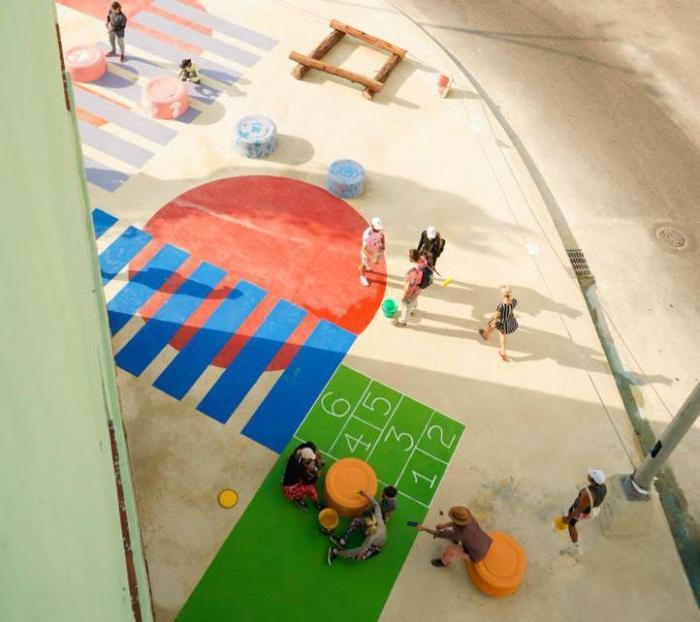
The iconic corner of Malecón and Avenida Italia (Galiano) in Havana has been revitalized thanks to the Avenida Italia project, which is funded by the Italian Agency for Development Cooperation (AICS).
According to Lorenza Strano, communications specialist at AICS, the Mass Construcción team worked on cleaning, leveling the ground, and basic infrastructure, including sanitary drainage and preparation for the installation of lighting and street furniture.
Recycled materials were reused in the project to create functional and sustainable furniture, applying the principles of tactical urbanism and placemaking: rapid, low-cost interventions with high social impact.
This project, launched in 2022 under an agreement between the Provincial Government of Havana and Unioncamere Piemonte, seeks to comprehensively redevelop the Centro Habana district and support innovative, sustainable, and creative economies, with a special focus on the inclusion and empowerment of young people and women.
The collaboration between Italian cooperation, artists, experts, professionals from the Master Plan of the Office of the Historian of the City of Havana, and the provincial and municipal government makes this urban transformation experience a model that can be replicated in other areas of the city, aimed at making the city more accessible, safe, and dynamic for everyone.
AVENIDA ITALIA PROJECT
Kiovet Sánchez, architect and urban planner, founding partner of the open innovation collective Ad Urbis Arquitectos, explained that the Urban Ideas Laboratory project on Avenida Italia included a series of actions related to urban laboratories.
As part of an interdisciplinary process, three workshops were held: one on improvisation, another on circular fashion, and another on graphic novels. A fourth workshop on sustainable urban planning was also held. All of these training activities took place at Casa Sarrá and were led by experts from Ad Urbis.

"We at Ad Urbis led that sustainable urban planning laboratory. We put out a call for participants and more than 30 young people applied. We chose 16 from the capital with backgrounds in geography, architecture, sociology, graphic design, industrial design, independent creators, artists, people from the world of fashion, and others who had participated in previous workshops."
Sánchez explained that the laboratory lasted two weeks, from February 3 to 14. First, it focused on the entire Avenida Italia and then on the intersection of Galiano and Malecón, with exercises that combined Cuban methodologies of sustainable urban development with those of Raúl Oliván, a Spanish innovator from Zaragoza, known as the "hexagon of public innovation."
"The young people defined problems and challenges, imagined the future, established actors and roles, and developed minimum viable products, thus creating several projects focused on feminist urbanism and accessibility. The workshop leaders presented several project proposals for different public spaces on Avenida Italia, particularly for the intersection of Galiano and Malecón," Sánchez highlighted.
The leader of Ad Urbis Arquitectos clarified that the best ideas were then selected from among all those presented and a proposal was made, which is the intervention that has just been completed.
"A group of minimal actions were defined to improve that public space. Furniture was added by recycling tires, wood, and bricks. Paving and lighting were added, and the horizontal surface was improved. The main objective was to try to turn the space into a public place," he said.
Regarding the role of Ad Urbis, he indicated that they led the methodological process, produced a summary book, and accompanied the implementation together with the young people.
"The importance of this project is to demonstrate that ideas can be implemented with minimal resources, with innovation, with participatory processes, and with the desire of young people who want to do things for their city. And the important thing is not the result, it is the process," concluded Sánchez.
Following the intervention, the space now features a graphic design on the pavement and a collective mural painted by these young people, with the aim of strengthening community identity and a sense of belonging.















